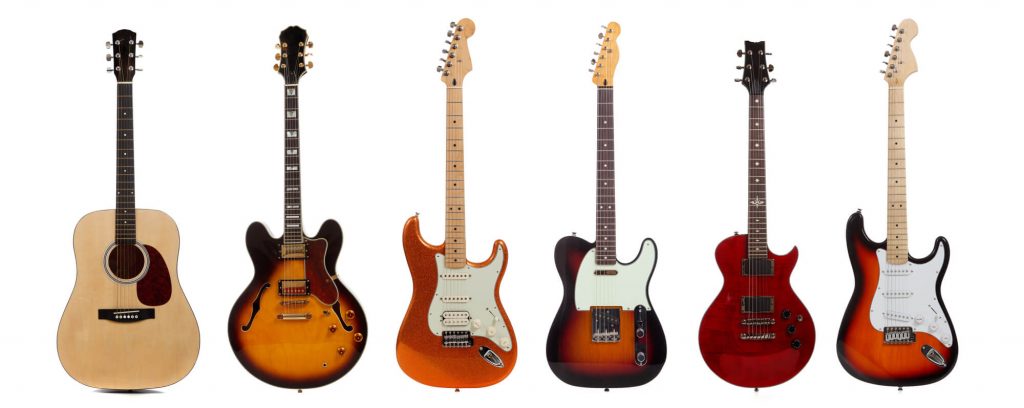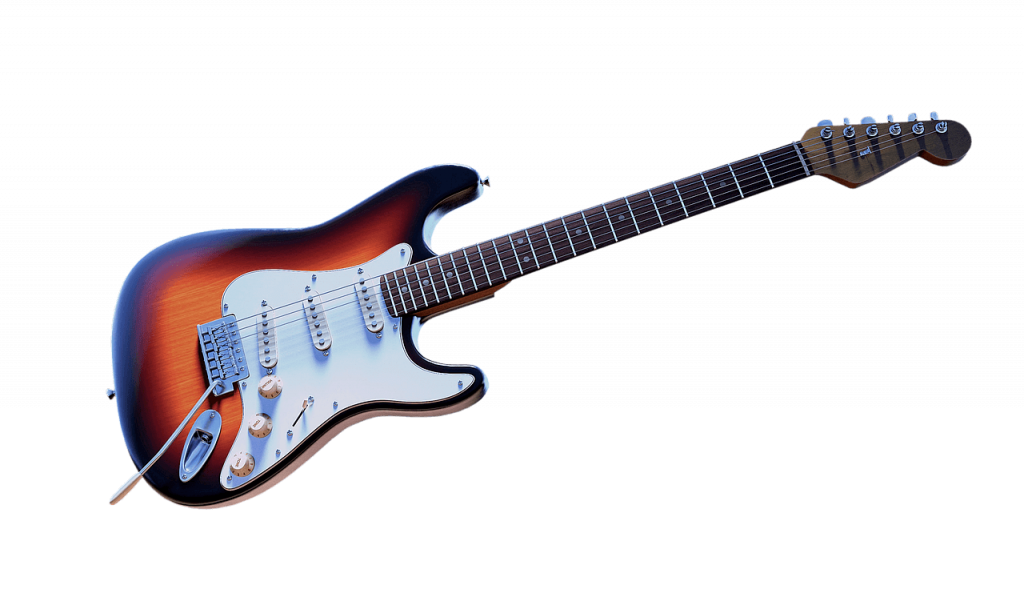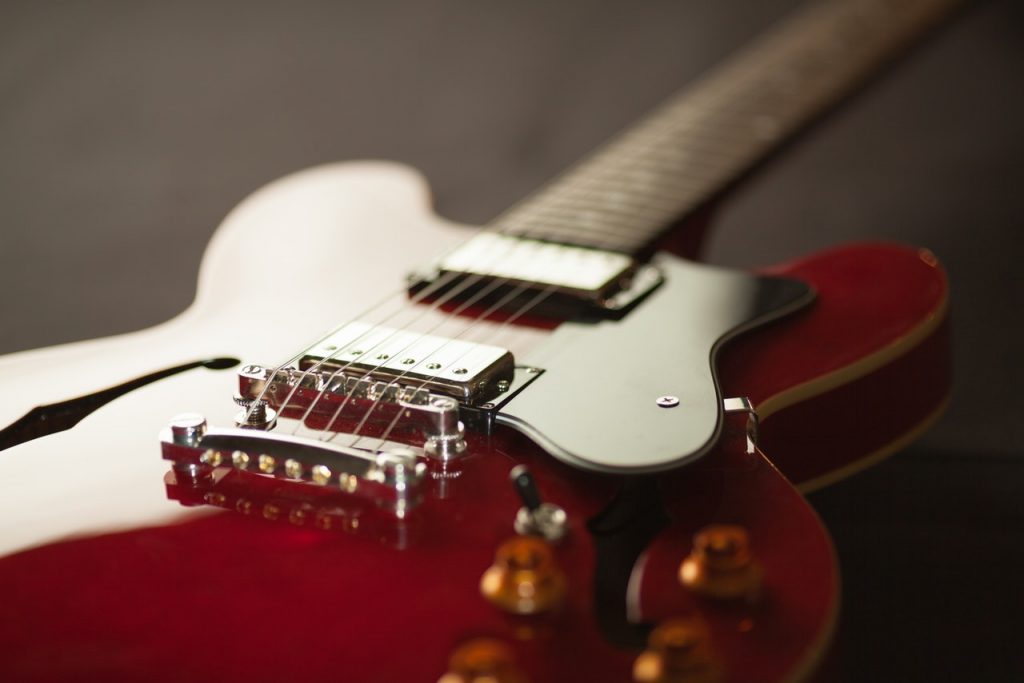It is an acoustic guitar with an electronic pickup allowing the option to connect to a mixer, PA system, or an acoustic amplifier. They are preferred when the normal volume of a regular acoustic guitar is deemed too low for an occasion, such as live performances.
A preamplifier fitted to the guitar’s body amplifies signals before traveling to the main guitar amplifier in electric acoustic guitars. The preamplifiers typically feature integrated tuners and EQ/volume controls for improved usage.
History
The acoustic guitar started being used in big bands in the 1920s. But quickly, it was apparent that amplification was necessary because the drum and horns section outplayed the guitar.
Attempts made to amplify the vibrations of a guitar electrically date back to the early 1900s when telephone transmitters were modified and put inside banjos and violins to amplify the sound. Carbon button microphones joined to the bridge were also used, producing weak signals.
Lloyd Loar was the first person to ever create the acoustic guitar’s modern electric pickup in the 1930s with his company, vivitone. A removable drawer in the guitar’s bass rim was mounted with electronics. Signals would then be transferred from a wooden bridge to a metal plate, allowing an electric output and amplification.
However, Harry DeArmond’s FHC pickups, launched in the 1930s, were the first electric pickups to be available commercially. They didn’t need any guitar modifications, which made them widely adopted.
Why Use an Electric Acoustic Guitar?
Electric acoustic guitars are amazing if you wish to take your sound to the level of a live performance without compromising on control. That’s not all! The consistency and versatility of this guitar set it apart from the rest.
The guitar can directly plug into a mixing console or amplifier because of its built-in pickup system. It makes the tonal output from the instrument more consistent and more manageable in live occasions where the time to adjust the sound of a separate microphone may be lacking.
Pros and Cons of the Electric Acoustic Guitar
Playing this guitar comes with its positives and negatives, just like all other instruments. We’ll begin with the pros.
Pros
- The sound projection is bigger than non-electric acoustic guitars
- The guitar can play unplugged or plugged in
- You can customize your sound
- It allows free movement on stage during performances
- Better amplification of harmonic overtones
Cons
- You require a power source to play the electric acoustic guitar plugged in.
- If you want to play the guitar plugged in, extra purchases are needed
- Plugged in usage requires additional storage
- The electric acoustic guitar doesn’t serve many purposes other than live performances.
What Should I Consider When Buying an Electric Acoustic Guitar?
We don’t mean to sound too obvious but consider what you’d consider when choosing any other instrument.
- The guitar should sound good both electrically and acoustically. Test it with a PA system or amp to check the quality of electronics or pickup. Please don’t assume that a guitar sounds good when plugged in because it sounds good when unplugged.
- Most electric acoustic guitars feature a built-in preamplifier these days but be sure the one you choose has it by asking. The preamplifier boosts the guitar’s signal output making the sound more profound and powerful.
- Consider the extra features a guitar offers before making a decision. Features like volume and tone knobs, built-in tuners, equalization filters, and feedback suppressors can help during live performances. The good thing is that you can easily trace the features on the side or where the guitar plugs in.
- Most electric acoustic guitars use batteries to power them, which lasts them for months. The location of the battery compartment is unknown, so accessing and replacing batteries is nearly impossible.
What Differentiates an Electric Acoustic Guitar from a Normal Acoustic Guitar?
Electric acoustics and acoustics are similar apart from one thing – electric acoustics have a built-in amplifier and input. It means that the electric acoustic can amplify sound without needing a microphone, while the acoustic needs a separate microphone for amplification.
Is an Electric Acoustic Guitar Good for Beginners?
Whether this guitar is suitable for beginners or not is a point of controversy among many musicians. We can recommend it because of the versatility and benefits, but it’s more than that for beginners.
Beginners should consider several factors, depending on individual tastes and preferences. Here are three major factors.
1. Playability
The steel rings on the electric acoustic guitar may harm a beginner’s fingers. You can minimize the hurt by lowering the action on the guitar.
2. Shape and size
Which size and shape feel comfortable on your hand when playing? Ensure you experience maximum comfort and ease without sacrificing the sound projection.
3. Price
The electric acoustic guitar varies in price depending on the brand. One thing for sure is that the price of an electric acoustic guitar and an acoustic guitar are almost the same and if not the former costs a wee bit more. The electric acoustic is the better investment nevertheless.
What Music Styles Best Suit an Electric Acoustic Guitar?
The electric acoustic guitar expands the choice of music one may desire to play. Unlike the electric acoustic, you rarely find funk, punk, or goth being played to acoustic guitars.
Can You Play an Electric Acoustic Guitar Without an Amplifier?
Yes, it’s possible. The amplifier becomes useful when you need the guitar’s sound amplified. If you don’t wish to play with an amplifier, go ahead.
Final Thoughts
We’ve summarized all the important things you need to know about the electric acoustic guitar. A bit of history, advantages, and disadvantages, and why you should choose it are some of the headings that will open your mind and help you better understand the instrument.
Hopefully, you can now answer “what is an electric acoustic guitar?” more confidently.
Cheers!






